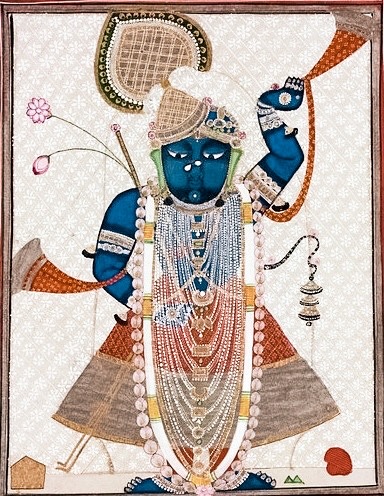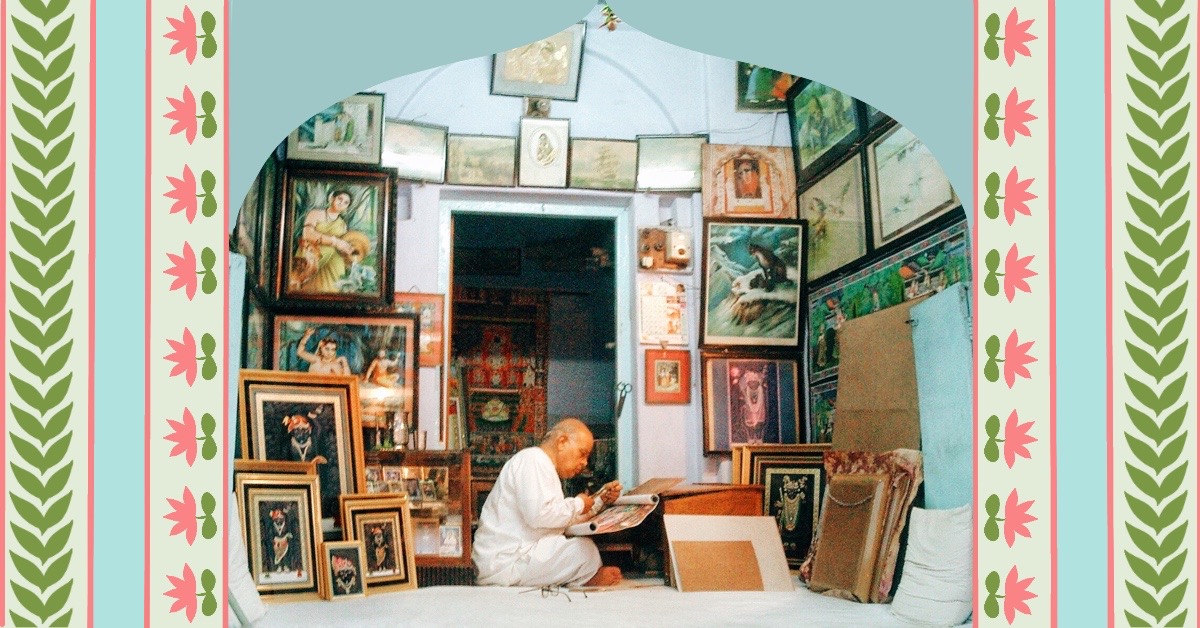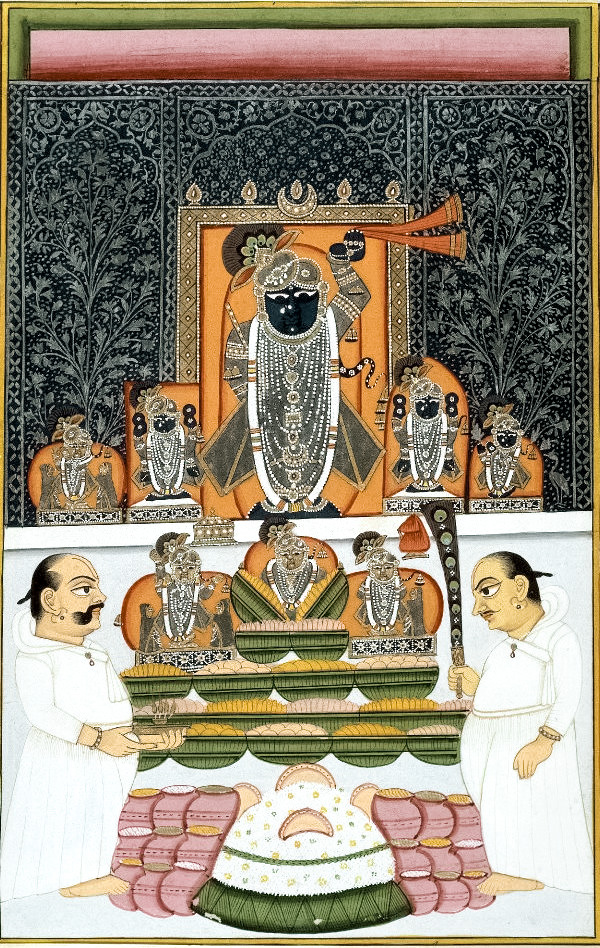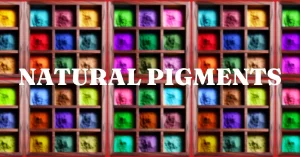Indian Pichwai pattern art is a culturally rich and intricate method of making wall-hanging paintings. First commissioned about 300 years ago in Rajasthan, India, these paintings are dedicated to depictions of the Hindu god Krishna and scenes from his life. The ornamentation and motifs are based on botanicals and the layout of a typical Indian garden and its flowers. Some of these botanicals include the Lotus flower, May flowers, Marigold and Jasmin flowers. In this post, we will explore Indian Pichwai pattern art.
The History of Pichwai Art in India
Pichwai is an Indian pattern art form that originated in Udaipur in the state of Rajasthan. Shri Vallabacharya led a Hindu sect called Pushti Marg. This sect began preparing commissioned religious artwork in the form of cloth, wall-hangings for the Shrinathji temple in Nathdwara, Udaipur. This art commission was around the year 1672. You can visit even today and see the traditional Pichwai art from Rajasthan.
What is Indian Pichwai Pattern Art?
Pichhwai or Pichwai comes from the Sanskrit words “Pichh” which means “back” and “wais” which means hanging. The art form gets its name because Pichhwai hangings are usually placed behind the idols as a backdrop. The Subject of Pichwai art designs and patterns was almost always an event in the life of the Hindu god Krishna. Pichwai Art communicates the stories of the gods. This is the significance of Pichwai art in Hinduism, much like the purpose of medieval Christian iconography.

How to create Pichwai art at home?
In Pichwai Art, the Raas Leela dance with Lord Krishna and the Gopis is one of the most intricate subjects. A garden full of intricate elements like birds, animals, flower motifs, fountains and trees depicts the dance. With all of the complex elements and their intricacies, an artisan can take weeks to complete a Pichwai painting.
Firstly, to paint Pichwai art themes and motifs, it is best to create decorative borders around the canvas and then place the scene in the centre. The borders and scenes should not be realistic. Instead, you can draw the elements you select as abstract motifs. In other words, the elements should not be realistic but almost like paisley patterns.

Indian Pichwai Pattern Art today:
Today, artisans in the north of India struggle to keep this art form alive. Thankfully, it is easier today to look for Pichwai artists through a Google search or look through Etsy for Pichwai art paintings for sale. With a cool transition to digital forms, Indian illustrators are creating beautiful digital illustrations inspired by Pichwai Art. Instead of looking for Pichwai art museums and exhibitions, it is better to visit the Shrinathji temple in Nathdwara on your visit to Rajasthan.
Surface Patterns Designers and Interior Designers are making beautiful wallpapers inspired by Pichwai with the use of some of its recognisable botanical motifs. Pichwai-inspired art would fit beautifully in a square or rectangle framed digital space, it would work well as a social media post or a label artwork for a packet of Indian Snacks.

Indian Pichwai art is a living testament to the timeless bond between art and devotion. Through stories about its origins in Nathdwara, its intricate techniques, and its spiritual significance, we gain a deeper understanding of this vibrant tradition that brings the divine stories of Lord Krishna to life. Pichwai art’s ability to adapt to modern sensibilities while preserving its rich heritage is a testament to its enduring appeal. It continues to inspire devotees, artists, and art enthusiasts alike, serving as a colourful bridge between the earthly and the divine. Indian Pichwai art, with its tales on colourful canvases, remains a treasure trove of culture, spirituality, and artistic brilliance.







0 Comments